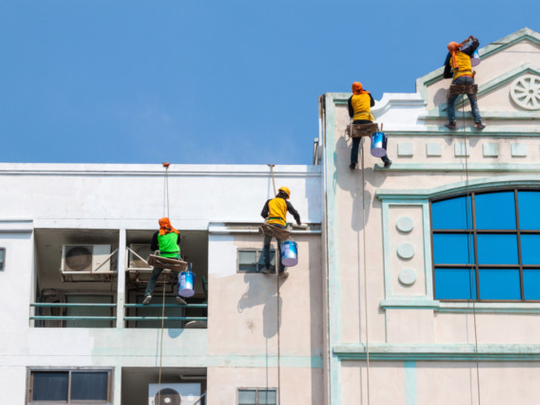
The Real Estate Regulatory Authority (Rera) sets specific guidelines and legislation concerning the management of jointly owned property in Dubai. Defined by the Direction for Association Constitution issued in accordance with Law No 27 of 2007 as “the whole or part of a building or land, divided into units intended for separate ownership”, jointly owned properties include apartments, villas and whole communities sharing common areas. The building or land is typically managed by a firm appointed by the owners’ association (OA) to administer and operate the day-to-day tasks of maintenance, security, cleaning, finance and the like. Rera requires the OA or the OA manager to set budgets and establish two separate funds – the general fund and the reserve fund, both contributed to by the owners through a service charge.
The general fund is intended to cover routine maintenance service costs and other day-to-day expenditure of a recurrent nature. The reserve fund “shall comprise expenditure of a capital or non-recurrent nature and other expenditure that should reasonably be met from capital”, according to the 2007 law. This includes the replacement of wasting assets — fire suppression equipment, facades, AC units, lifts, etc, all of which will reach the end of their useful life and require replacement within the lifespan of the building, and probably within your term of ownership.
Reserve fund study
One of Rera’s requirements for service charge budget approval is a formal reserve fund study. In order to work out how much money needs to be saved to pay for building assets as they expire in the future, surveyors will gather all relevant data on a property through a two-tier approach and assess the current condition of each asset. They will complete a comprehensive examination of factors, including the asset type, its location and exposure, how well it was fitted, how well it has been maintained and how these factors have affected the remaining useful life of the asset. This will then identify the year in which the asset should be replaced. This forecast of life expectancy allows the surveyor to formulate a financial table, taking into account the current replacement cost and expected future cost, the effect of inflation and how this is offset by account interest. The objective is to reveal a forecast of expenditure over a time horizon of around 60 years and to show this as a 10- or 20-year window. Forecasts over such long periods will prove to be inaccurate if they are not updated every three years to account for changes in maintenance practice, inflation and account expenditure.
Consultants carrying out the study must hold the “Property Observer” trade licence, signalling that they have sufficient experience in building construction and condition to understand the basics of the built environment being considered. It should not be assumed that all firms with the licence can undertake a reserve fund study. It should be carried out by competent consultants with sufficient local experience, in accordance with international standards of practice and tailored to suit the proclivities of Dubai.
Underfunded reserves
One key trend that we have found when carrying out a comparison on what level the reserve fund should be versus what is currently being invested, is that there is a considerable deficit. It is not difficult to imagine why this may be, for example, non-payment of service charges, incorrect use of funds for general items or payments for correction of latent building defects caused by sub-standard contractors. However, in our experience, the main reason for the deficit is due to the service charge being set too low in the first place, often due to assigning historic rates from other (non-comparable) buildings. This may set an attractively low service charge for potential owners, but it clearly does not represent the building’s current costs or reflect good practice.
This short-sighted economy can have disastrous consequences for a building in the future. If funds are not available to replace key building assets such as chillers, water tanks or fire pumps in the future, owners may face a “special levy” in the form of a large lump sum to pay. If this cannot be paid by some owners and if the building around your property is falling apart, this will have an extremely detrimental effect on property value.
Ensuring correct level of reserves
For owners in jointly owned property, check with your OA that a proper reserve fund study is in place. This should be carried out by a competent consultant, in accordance with Rera requirements. It should be updated at least every three years to account for changes in inflation and to reflect the maintenance standards of the facilities management team. This can have a huge effect on the lifespan of a building’s assets. It is then up to the manager to ensure that reserve contributions meet the plan or a programme of gradual increase is in place. The best way to keep the reserve fund costs as low and as accurate as possible is to carry out the design stage, as a life-cycle costing exercise, where the whole cost of a specification is revealed.











